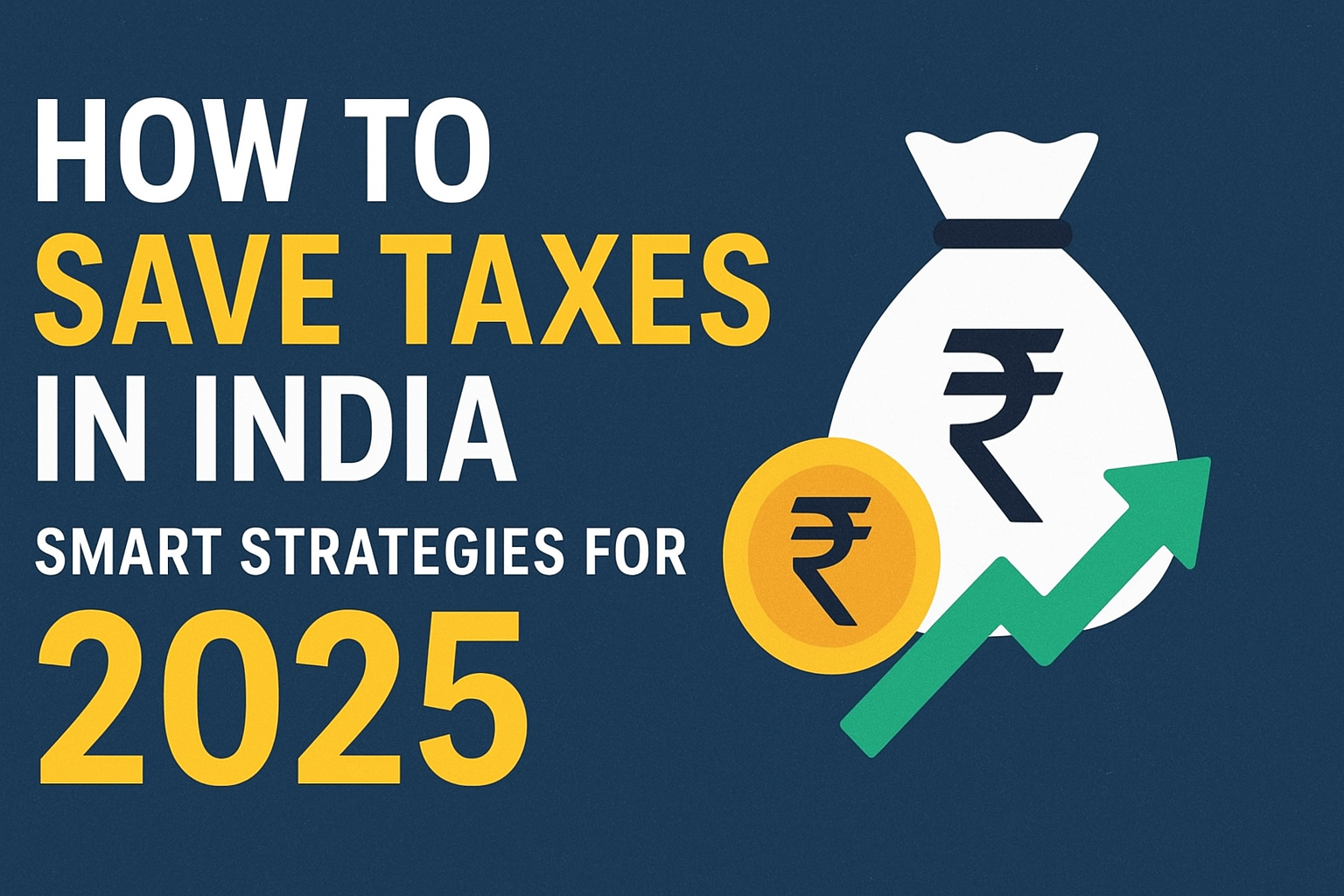Save taxes in India legally is a wise financial move that helps channel more money toward your goals. In India, the Income Tax Act offers a variety of deductions, exemptions, and investment instruments to minimize your tax outgo while building wealth. Here’s a comprehensive guide on how to save tax in India in 2025.
1. Leverage Section 80C Investments
The most powerful tax-saving section, 80C, offers deductions up to ₹1.5 lakh annually. Key instruments include:
ELSS (Equity Linked Savings Schemes): These mutual funds offer tax deductions up to ₹1.5 lakh, with a short lock-in of 3 years and the potential for market-linked returns of 12–15% per annum
Public Provident Fund (PPF): Offers safe returns (~7.1%), with EEE (Exempt-Exempt-Exempt) tax status. Contributions up to ₹1.5 lakh are tax-deductible, and both interest and maturity are tax-free
National Savings Certificate (NSC): A 5-year government-backed fixed-income option offering deductions up to ₹1.5 lakh. Interest, though taxable, qualifies for reinvestment under 80C
Tax-saving Fixed Deposits (FDs): 5-year bank/post office FDs eligible under 80C; returns (~6.5–7.5%) are taxable
Life Insurance Premiums & Children’s Tuition Fees: Premiums and tuition also count under 80C, adding financial protection and educational benefits
Sukanya Samriddhi Yojana (SSY): Tailored for the girl child, this scheme offers ~8% interest with EEE benefits and 80C deductions
Employees’ Provident Fund (EPF): Mandatory for many salaried individuals. Offers ~8% interest and tax-free maturity if withdrawn after 5 years
2. Maximize Additional Deductions via NPS—Section 80CCD(1B)
In addition to the ₹1.5 lakh limit under 80C, the National Pension System (NPS) offers an extra ₹50,000 deduction under Section 80CCD(1B). This makes it a robust choice for retirement planning while saving taxes
3. Claim Section 80D for Health & Medical Insurance
Health insurance premiums are deductible under Section 80D: Up to ₹25,000 for self, spouse, and children.
Additional ₹50,000 if covering senior citizen parents. You can also claim ₹5,000 for preventive health check-up
4. Utilize House Rent Allowance (HRA)
If you’re a salaried individual living in rented accommodation, you can claim HRA deduction depending on rent paid, actual HRA received, and your salary. You must submit rent receipts and landlord details while filing ITR
HDFC Mutual Fund
5. Take Advantage of Reimbursements & Standard Deduction
deduction for salaried taxpayers has increased to ₹75,000 under the new tax regime
Tax-free allowances like meal coupons, internet reimbursement, and others can further trim your taxable income, especially under the old regime
HDFC Mutual Fund
6. Choose Between Old and New Tax Regimes carefully
Under the new tax regime (FY 2025–26), income up to ₹12 lakh is tax-free after a ₹75,000 standard deduction, with revised slab rates for higher income
However, if you utilize 80C, 80D, HRA, and NPS benefits, the old regime may still lead to greater savings
7. Don’t Abandon Key Instruments in the New Regime
Even if you opt for the new regime, continuing contributions to PPF, EPF, NPS, life and health insurance is prudent. These aren’t just tax-saving—they offer long-term financial security and force savings
Also Read : Canara Bank Home Loan Procedure for 2025: Updated Steps Information
8. Keep Proper Documentation
Claiming deductions has become more documentation-intensive. For the assessment year 2025–26, you must provide:
- Policy numbers for insurance.
- Account numbers for PPF/NSC.
- Rent receipts and landlord PAN for HRA.
- Details of health insurance and medical claims.
Filing accurate documents ensures smooth verification and compliance
The Times of India
Conclusion
Saving taxes in India is not just about reducing liability—it’s a disciplined way to build future wealth and financial resilience. To do it effectively:
- Maximize your Section 80C limit using instruments like ELSS, PPF, SSY, EPF, and NSC.
- Add another ₹50,000 deduction with NPS under Section 80CCD(1B).
- Take advantage of Section 80D for health insurance.
- Claim HRA and use tax-free allowances and the revised standard deduction.
- Evaluate tax regimes (old vs new) to choose what benefits you more.
- Keep securing your future even if you switch to the new regime.
- Ensure you file necessary proofs and stay compliant.
- A balanced mix—combining equity-linked instruments like ELSS for growth and safe options like PPF/PPF/insurance for security—can optimize both tax savings and wealth creation. For a strategy tailored to your earnings and goals, consulting a financial advisor is recommended.

